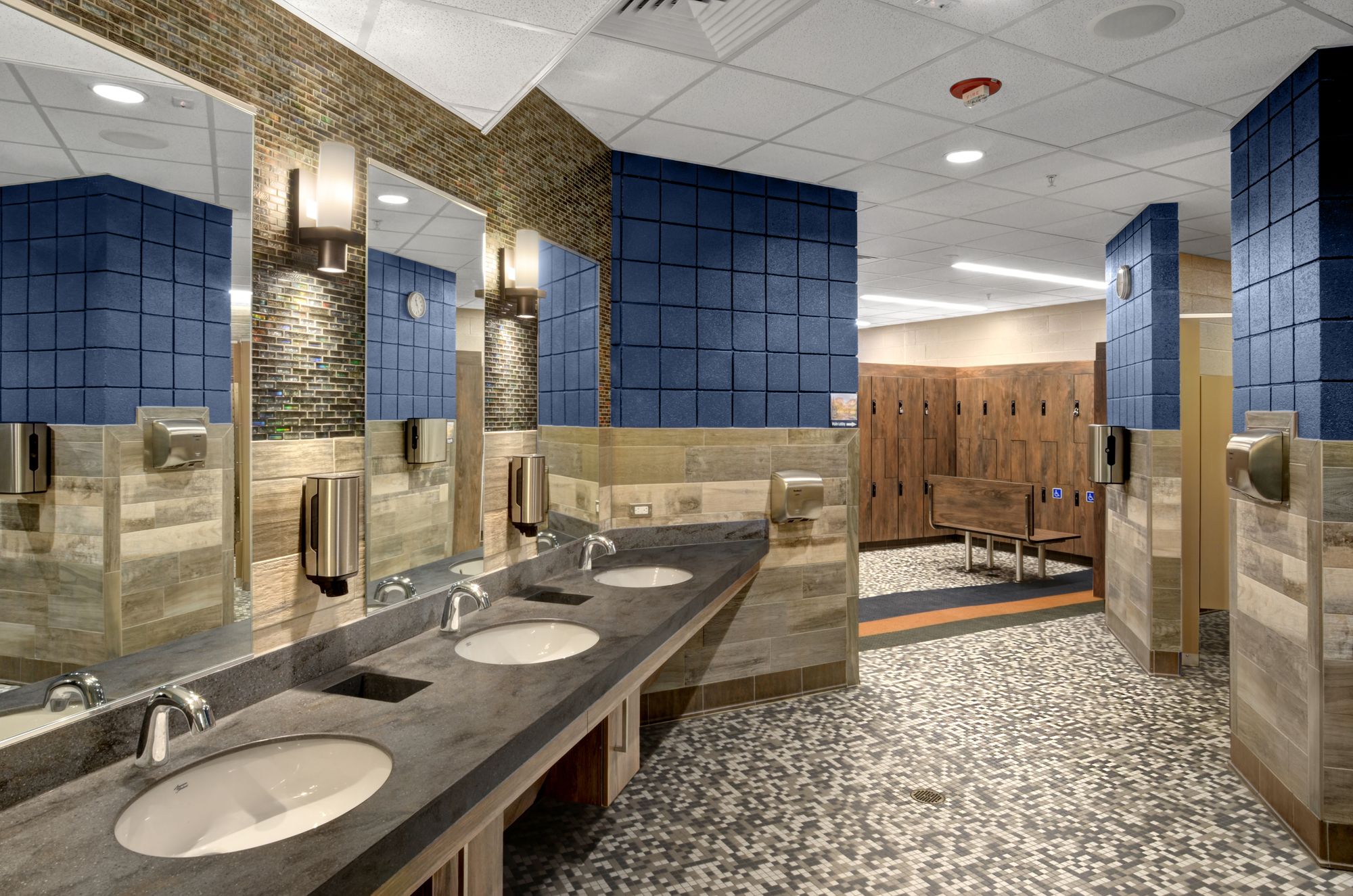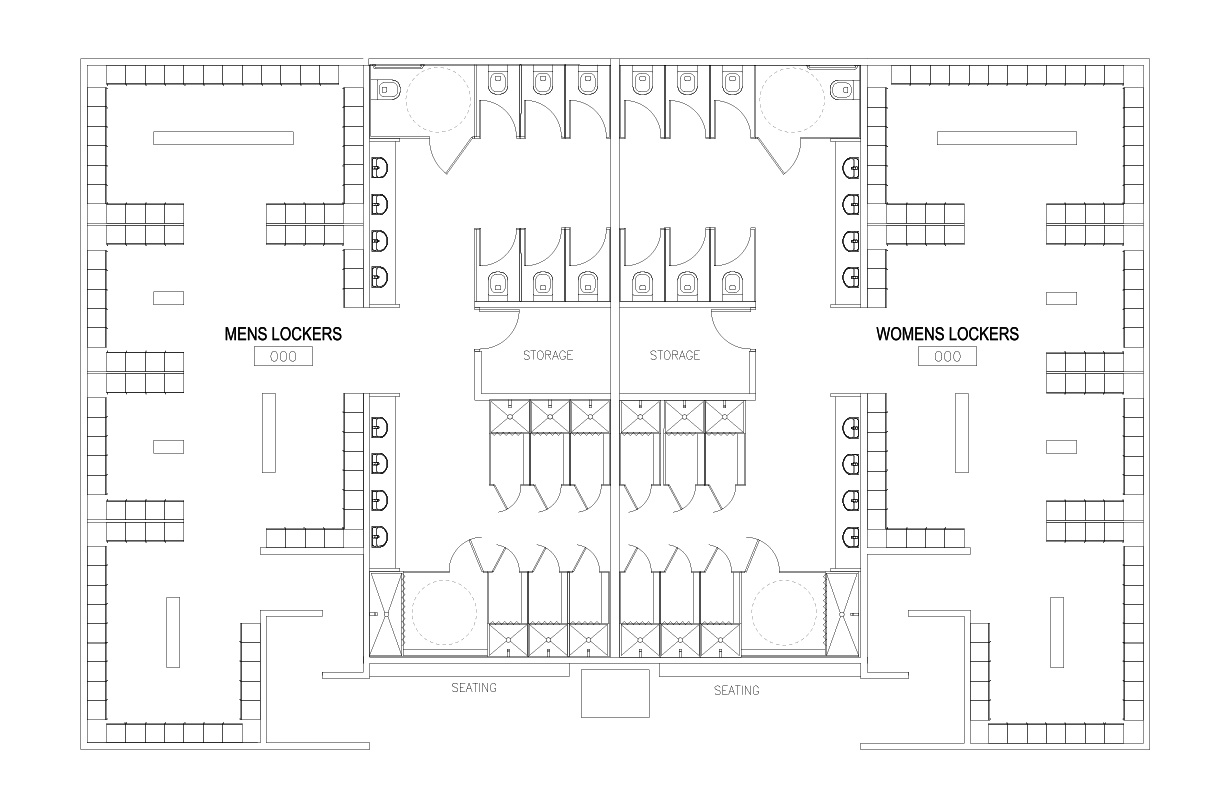Locker Room Essentials

A well-designed locker room is crucial for providing a comfortable and functional space for individuals to change, shower, and store their belongings. This section will delve into the fundamental design elements that contribute to a successful locker room, exploring the essential fixtures and equipment, and examining materials commonly used for construction.
Essential Fixtures and Equipment
The selection of fixtures and equipment is paramount in creating a functional and comfortable locker room environment.
- Lockers: Lockers are the cornerstone of any locker room, providing secure storage for personal belongings. They should be durable, spacious, and easily accessible. Popular materials for locker construction include steel, metal alloys, and plastic.
- Benches: Benches are essential for providing seating areas for changing, putting on shoes, or taking a break. Benches should be made from materials that are easy to clean and resistant to wear and tear. Common materials include wood, plastic, and metal.
- Showers: Showers are a fundamental component of any locker room, offering a convenient and hygienic way to cleanse after physical activity. They should be designed with user comfort and safety in mind, including features like non-slip flooring and adjustable showerheads.
- Sinks: Sinks are essential for handwashing and other hygiene needs. They should be placed in convenient locations throughout the locker room and be equipped with soap dispensers and paper towel holders.
- Mirrors: Mirrors are important for personal grooming and allow individuals to check their appearance before leaving the locker room. They should be positioned in well-lit areas and be made from durable materials.
- Waste Bins: Adequate waste bins are essential for maintaining a clean and hygienic environment. They should be placed strategically throughout the locker room and be equipped with liners for easy disposal.
- Drying Racks: Drying racks are important for hanging wet towels and clothing. They can be incorporated into the locker design or placed in designated areas.
- Water Fountains: Water fountains are a necessity for hydration and should be placed in accessible locations throughout the locker room.
Materials for Locker Room Construction, Locker room bathroom design
The selection of materials is crucial for ensuring the durability, ease of maintenance, and aesthetic appeal of a locker room.
- Ceramic Tiles: Ceramic tiles are a popular choice for locker room floors and walls due to their durability, water resistance, and ease of cleaning. They come in a wide variety of colors and patterns, allowing for customization to match the desired aesthetic.
- Concrete: Concrete is a durable and versatile material that is often used for floors and walls in locker rooms. It is resistant to wear and tear and can be easily cleaned.
- Stainless Steel: Stainless steel is a popular choice for locker room fixtures, such as sinks, showers, and lockers, due to its durability, corrosion resistance, and ease of cleaning.
- Plastic: Plastic is a lightweight and cost-effective material that is often used for benches, lockers, and other fixtures. It is easy to clean and maintain, but it may not be as durable as other materials.
- Wood: Wood is a natural and aesthetically pleasing material that can be used for benches and other fixtures. However, it requires regular maintenance to prevent damage from moisture and wear.
Practical Considerations: Locker Room Bathroom Design

Creating a safe, hygienic, and functional locker room requires careful consideration of practical factors that ensure the well-being and comfort of users. This section delves into essential safety and security features, the importance of proper ventilation and drainage, and practical tips for maximizing storage space within the locker room.
Safety and Security Features
Safety and security are paramount in any locker room environment. Implementing robust measures helps create a secure space for users to store their belongings and engage in activities without worry.
- Emergency Exits: Clearly marked and easily accessible emergency exits are crucial for safe evacuation in case of fire or other emergencies. Multiple exits should be provided, strategically located to ensure quick and safe egress from the locker room.
- Fire Suppression Systems: Installing a reliable fire suppression system is essential to prevent the spread of fire and protect users and property. Sprinkler systems, fire alarms, and fire extinguishers should be regularly inspected and maintained for optimal functionality.
- Security Cameras: Surveillance cameras can deter theft and vandalism while providing valuable evidence in case of incidents. Cameras should be strategically placed to cover high-traffic areas and potential blind spots within the locker room.
Ventilation and Drainage
Proper ventilation and drainage are essential for maintaining a healthy and hygienic locker room environment. They prevent the buildup of moisture, odors, and mold, creating a comfortable and safe space for users.
- Ventilation Systems: Adequate ventilation systems should be installed to remove moisture, odors, and airborne contaminants. These systems should be designed to provide sufficient airflow, ensuring fresh air circulation and preventing the buildup of stale air.
- Drainage Systems: Effective drainage systems are crucial to prevent water accumulation and potential mold growth. Shower areas should be equipped with proper drainage channels and floor slopes to direct water towards the drain. Regular cleaning and maintenance of drainage systems are essential to ensure optimal functionality.
Maximizing Storage Space
Optimizing storage space within the locker room is crucial for maximizing efficiency and minimizing clutter. Proper storage solutions ensure that users have ample space to store their belongings securely and conveniently.
- Lockers: Lockers should be provided in sufficient quantity and size to accommodate the needs of users. Consider offering a variety of locker sizes to meet different storage requirements. Lockers can be installed with shelves, hooks, and other features to maximize storage capacity.
- Shelving Units: Installing additional shelving units in the locker room can provide extra storage space for items like towels, bags, and shoes. Shelving units should be made of durable materials and designed to withstand heavy loads.
- Wall-Mounted Storage: Utilizing wall-mounted storage solutions can help maximize floor space. Hooks, baskets, and shelves can be installed on walls to store items like towels, bags, and clothing.
Locker room bathroom design presents a unique challenge, balancing functionality with hygiene and aesthetics. From the layout of showers and stalls to the selection of durable materials, meticulous planning is key. If you’re interested in pursuing a career in bathroom design, how to become a bathroom designer can guide you through the process.
Understanding the specific needs of locker rooms, including high traffic and the need for easy cleaning, is crucial for successful design.
Locker room bathroom design often prioritizes durability and easy maintenance. A key factor in achieving this is selecting the best paint texture for bathroom , one that can withstand moisture, resist stains, and be easily cleaned. A semi-gloss or satin finish is a popular choice for locker rooms, as it provides a durable, washable surface that can handle high traffic and frequent cleaning.